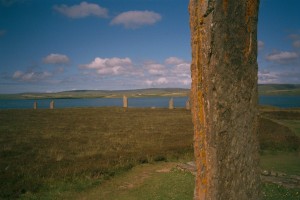
First published in Government Computing, September 2002
Orkney Island Council is the smallest full-service local authority in the UK, a unitary body that governs just 20,000 people on 17 inhabited islands.
It is also a place where they love the internet. A council survey last summer, which gathered responses from over 1,000 households, found that 44% had internet access with another 6% planning to go online by the end of 2002. The national equivalent last summer, according to Oftel, was 39%.
So it may come as a surprise that the council is planning to concentrate on video-conferencing, rather than its web-site, in providing electronic access to social services, housing and health.
“We initially thought we would put a computer in each community, with maybe a webcam,” says one stop shop project manager Jim Robertson. “That wasn’t welcomed.”
Consultations with Orkney’s community councils established that vulnerable citizens were less likely to be able to use a computerised system. Hence Robertson’s programme will use video-conferencing, incorporating remote form-filling, to provide virtual one stop shops in each community.
“It’s the one-to-one service you would get if you came from North Ronaldsay into Kirkwall,” Robertson says, referring to the most remote Orkney island.
Orkney already makes some use of video-conferencing, particularly in education. Every school on the outlying islands has had Sony Connect equipment since 1999, along with a computer, printer and fax machine, linked by an ISDN2 connection to a centre in Kirkwall.
The outlying islands are served by specialist “travelling teachers”, who fly in for a day to provide the islands’ schools with a wider range of teaching. When the flights are grounded they deliver lessons through these video links.
The terminals also act as “outreach centres” usable by anyone, although they have to book with the island’s co-ordinator. Other successful uses include staff meetings for teachers, and for linking community councils to the centre in Kirkwall.
IT development manager Sweyn Hunter adds that Orkney council itself has taken advantage of video conferencing to increase its participation in the Scottish Executive in Edinburgh. A face-to-face meeting there costs several hours’ flight time and at least £400 per person, but the one stop shop project will not use the existing school facilities.
“They want a place they can get to easily, without having to alert half the community to get the key,” says Jim Robertson.
The idea is that users will see nothing more intimidating than one or two television screens and a camera – no keyboards or mice.
“People need the capability of talking to a telly – which we do all the time anyway,” Robertson jokes. The system will be activated very simply; perhaps by a user opening the door.
The council is planning three pilots in varied locations: Stromness, the Orkney mainland’s second town and ferry port; Graemsay, a small island with just 19 residents, but located just half a mile from the mainland; and Westray, with 500 inhabitants the second most populated island.
On locations such as Graemsay sharing facilities with other services such as the local NHS would make sense. Adrian Williams, the council’s assistant director, says Orkney has a good record of inter-agency co-operation, and thinks that good pilots will smooth the way.
Jim Robertson points out that there are plenty of other services that could eventually take advantage of video-conferencing, such as youth work, Inland Revenue, virtual hospital visits and NHS 24 (the Scottish version of NHS Direct). “On Graemsay, they have to take a ferry to see a doctor, who may well say, take an aspirin and go to bed,” he points out.
Orkney has already tested one system, already used for benefits queries in Ayrshire. This provides two screens: one showing the council officer, the other showing any paperwork that officer is completing on behalf of the user.
“The less technically able they were, the more they like it,” says Robertson.
He is also talking to an internet kiosk provider before the council issues a tender. Connectivity is likely to be through ISDN2. The council plans to open the three pilots in April next year, subject to council and EU funding. They will last two years.
Robertson stresses the importance of gathering local views in choosing this kind of video-conferencing. “Consultations are always seen as something you do, and don’t get a lot out of,” he says.
“In reality, people have got really good ideas. You can start to provide really useful solutions, but you have to listen first.”
Article and photo copyright SA Mathieson 2002
